#Osvaldo Barbieri
Explore tagged Tumblr posts
Text

Cover of Libya Magazine, February 1940 issue
The cover was designed and illustrated by the Italian artist Osvaldo Barbieri.
9 notes
·
View notes
Text


CALIFICACIÓN PERSONAL: 6 / 10
Título Original: La guerra del cerdo
Año: 1975
Duración: 83 min
País: Argentina
Dirección: Leopoldo Torre Nilsson
Guion: Beatriz Guido, Luis Pico Estrada, Leopoldo Torre Nilsson. Novela: Adolfo Bioy Casares
Música: Gato Barbieri
Fotografía: Aníbal Di Salvo
Reparto: José Slavin, Marta González, Víctor Laplace, Osvaldo Terranova, Miguel Ligero …
Productora: Producciones Cinematográficas Capricornio, Contracuadro
Género: Drama
TRAILER:
youtube
1 note
·
View note
Text
Belgrano derrotó a Sportivo con un doblete de Vegetti
Belgrano derrotó 2 a 0 a Sportivo Belgrano de San Francisco en el Gigante de Alberdi. En el encuentro de titulares, Pablo Vegetti marcó ambos tantos.
El Verde y el Celeste comparte la poseción de la pelota y ninguno logra imponerse. Los visitantes llegaron con mayor claridad al arco de Losada. Del otro lado, poco juego asociado en el último tercio del campo.
Recién los minutos finales pudo acercarse más el Pirata, con algunas chances claras para ponerse en ventaja.
En la segunda parte, el equipo de Orfila se paró más arriba y entre Ruiz Gómez y Vegetti armaron las mejores chances. Sportivo, de la mano de Francia, buscaba aprovechar los espacios por detrás de Bernardello.
Justamente de esa sociedad en el Pirata llegó el primer tanto, a los 15. Centro de Ruiz Gómez para que el goleador cabecee en el segundo palo. Sobre el cierre llegó el 2-0 final, tras una gran jugada de Barinaga para que defina Vegetti.
Pablo Vegetti y el 1 a 0 de Belgrano sobre Sportivo Belgrano pic.twitter.com/KF9z17qEHG
— Diego Mizraji (@dmizraji) March 6, 2021
Síntesis
Belgrano: Nahuel Losada; Juan Barinaga, Gino Barbieri, Santiago Morales y Axel Ochoa; Tomás Asprea, Hernán Bernardello y Valentín Barbero; Juan Ruiz Gómez, Pablo Vegetti y Ulises Sánchez. DT: Alejandro Orfila.
Sportivo Belgrano: Matías Quinteros; Emanuel Urquiza, Tomás Rossi, Mauro Orué y Osvaldo Arroyo; Andrés Alderete y Martín Argüello; Nicolás López Macri, Juan Pablo Francia y Román Strada; Ezequiel Gaviglio. DT: Bruno Martelotto
Goles: ST, 15m y 38m Vegetti (B).Cambios: ST, 15m Gerónimo Tomasetti por Barbero (B) y Facundo Heredia por Sánchez (B), 24m Diego Núñez por Francia (SB) y Ángel Prudencio por Gaviglio (SB).Árbitro: Paul Cresatti.Estadio: Julio César Villagra (Belgrano)Acotación: Se jugaron dos tiempos de 40 minutos cada uno.

evzud1exeaehi23_1615039925.jpg

evzih8uxmaiyaug_1615038100.jpg

evzd8k9wqaatssl_1615035690.jpg

evy9iqixcaqu3bh_1615033927.jpg
source https://mundod.lavoz.com.ar/futbol/belgrano-derroto-a-sportivo-con-un-doblete-de-vegetti
0 notes
Text
XXIII: 1923
On Irreducibile Particles, Rapid Assimilations, and Molasses Funks
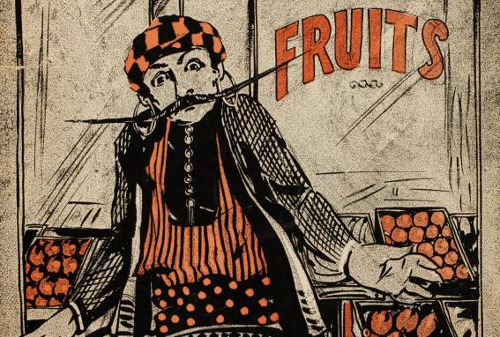
1. Billy Jones: “Yes! We Have No Bananas”
One of the four or five irreducible particles of the silliness of the Roaring Twenties, the folly of the années folles, the glitter of the Goldene Zwanziger, the keynote and image of all that was evanescent and soon to vanish, like champagne bubbles, in the era to come. A vaudeville routine sold as a Tin Pan Alley ditty, with a stop-start melody and nonsense refrain that captured a bluff, jaunty mood and lent itself to repetition, sawing relentlessly away with or without the lyrics kidding the incomplete Americanisms of the Lower East Side. But that kidding remains, a none too subtle reminder that the white majority would never consent to seeing immigrants as fully human. Nonsense in the United States is always political; perhaps that too is not unique to us.
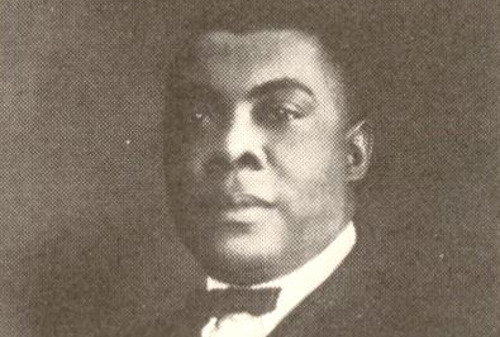
2. Clay Custer: “The Rocks”
The consensus among jazz scholars is that Clay Custer is most likely a pseudonym for the tune’s composer, but there are a few other Chicago-area pianists it could be, including his brother Hersal. Regardless, it’s the first disc on record to feature a walking bassline (so early in its development that it’s almost a stumbling one); this, combined with the previous year’s publication of “The Fives” from the same pen, is the birth of boogie-woogie piano. By decade’s end, the genre will have been fully formalized by pianists who all point to the work of Arkansas-born, New Orleans-trained, Chicago-adopted “Gut Bucket” George Washington Thomas as fundamental. Even apart from the all-important bassline, the chromatic opening trills and development of its themes—the rocks could be wave-dashed, or more euphemistic—give delight.

3. King Oliver’s Creole Jazz Band: “Dipper Mouth Blues”
Seven years is a long time in pop, which hot jazz still is. The gap between the Original Dixieland Jass Band’s first recordings and the first sides made by Joe “King” Oliver’s band—who would undoubtedly have been one of the ODJB’s primary inspirations back when New Orleans was the quarantined heart of jazz, before it spread like a virus to infect the entire nation—would have been noticeable in any era, but a comparison between the two reveals that while the white boys got the energy and the raucousness right, they missed the funk and the communal interplay. Oliver’s muted trumpet solo isn’t just virtuosity: it responds to and is responded to by the rest of the band, including the young second cornettist, recently arrived to Chicago from New Orleans.
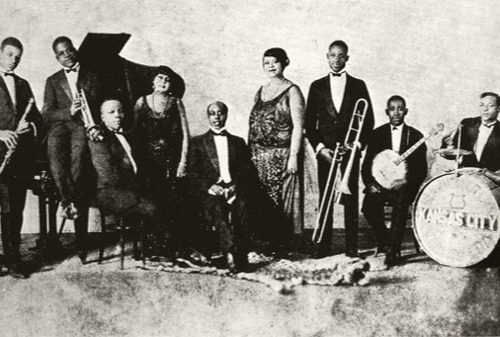
4. Bennie Moten’s Kansas City Orchestra: “Elephant’s Wobble”
And just as the first true New Orleans jazz is waxed, so too is the first true Kansas City jazz: less molasses funky, more brightly riffed, with a hard-stomping rhythm that presages much industrialized pop to come, from Motown to techno. Bennie Moten, a nearly thirty year old pianist, composer and now bandleader who had knocked about the Missouri ragtime scene since his youth, scored his first recording date in St. Louis, with a band of Kansas City luminaries who individually hearken back to older forms, from Sousa’s drilled marches to Joplin’s ragtime of theme and recapitulation to Ossman’s savagely strummed minstrel banjo: but together, powered by the newly hot-running engine of jazz, they produce a gleeful, entirely modern sound that piledrives, lean and hungry for rhythm, into the future.
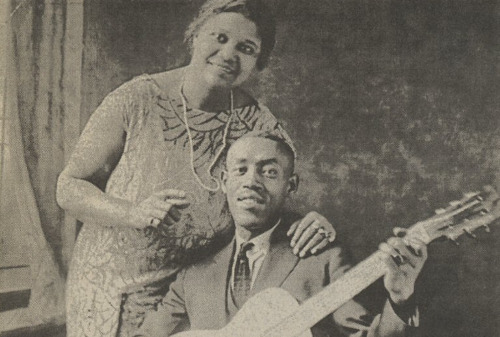
5. Sylvester Weaver: “Guitar Blues”
Most discographies will note this as the first country blues record; but Sylvester Weaver was born and reared in Louisville, Kentucky, which if it wasn’t a New York-scale metropolis was still no dirt-road waystation; nor is it the Deep South. Like most of his Black peers making their way before recording horns in the years before the electric-recording boom, Weaver was an urban entertainer—his first recordings were as an accompanist to blues singer Sara Martin. His instrument was called a “guitjo,” a banjo body strung like a guitar, and his slide technique sounds particularly otherworldly on its resonant body. The technique has appeared before, as played by Hawaiʻian musicians and white southerners; but here the sound connects (on record) to the blues, and the echoes from it will be lasting.

6. Os Oito Batutas: “Urubu”
We have heard the most prominent soloist in this supergroup before: choro composer and flautist Pixinguinha had already left his mark on Brazilian popular music in the 1910s. But when he joined seven other Black and mulatto choristas to form an eight-man group in 1919 so that a theater empresario would have an attraction in between showings of silent films, the result was a music that swung harder than traditional choro and even outpaced early samba: “Urubu” (the Guaraní word for vulture, and you can hear a wheeling, wing-fluttering flight in Pixinguinha’s flute) is just as modern, as dynamic, and as future-facing as any New Orleans jazz. In fact, musicians like Os Oito Batutas (the eight legends), demonstrate that the spirit of jazz was never exclusively a North American phenomenon.

7. Rosita Quiroga: “Sollozos”
Two legends in the field of Argentinean tango make their debut with this recording: Rosita Quiroga, the music’s first great woman singer, born in the lower-class milieu to which a cosmopolitan like Gardel only pretended; and Osvaldo Fresedo, the song’s composer, who when he begins to record in his own right will become perhaps the most emblematic tango bandleader of the decade, with a long career to follow. “Sollozos” (Sobs), with a lyric by the composer’s brother Emilio, is one of the great tango songs, uncovering the everyday pathos within the music’s slinky passion. Quiroga’s direct, unadorned vocal style refuses self-pity even as her words ask us to pity her, and the harmonium which opens the recording casts the plucked guitars which accompany her throughout in the light of eternity.

8. Carlos Gardel: “Alma porteña”
But as tango branched out into newly classed and gendered forms, Gardel the eternal cosmopolite continued to go from strength to strength. “Alma porteña” (Soul of Buenos Aires) is another of the deathless tango songs, in which the music itself is apostrophized as the cause, and cure, of all man’s ills. The mellifluous self-assurance in his baritone voice, the intricate backing of his accompanists Barbieri and Ricardo, and the swooping, tantalizing melody from Vicente Greco, who had been writing and performing tangos since the early 1910s, make a dazzling, almost overwhelming display of what I think of as Baroque tango, tango at its most self-important, self-mythologizing, and capital-r Romantic. If tango is une force qui va and Gardel is its prophet, why should we ever ask for anything more quotidian?

9. Bessie Smith: “Baby Won’t You Please Come Home Blues”
Three long years after the record companies learned that there was a market for “race” (for which see blues) records, the most famous and well compensated blues singer on the Black vaudeville circuit finally signed a contract with Columbia to cut her first records, accompanied on piano by early jazz pianist and empresario Clarence Williams, who had published (and supposedly co-wrote) this song. Its co-composer, Charles Warfield, later complained that he was cheated, which was probably true enough: music labels had much to learn from sheet-music publishers on how to screw over their talent. But the song itself is just a trifle: what makes it stick is Bessie Smith’s full-lunged performance, too self-possessed to be melodramatic about missing her lover, but too serious about her heartbreak to treat it flippantly either.

10. Ma Rainey with Lovie Austin and Her Blues Serenaders: “Barrel House Blues”
The blues singer who taught Bessie Smith to perform in public, and whose popular performances since the early 1900s in medicine shows, minstrel shows, and vaudeville had no doubt influenced white singers from Sophie Tucker to Marion Harris, also cut her first records for Paramount in 1923, at the age of forty-one. Accompanied by Chicago-based pianist and composer Lovie Austin and her hot jazz band, Rainey sings three verses that mock at Prohibition while reinforcing her own status as the elder stateswoman of the blues: the “Papa” of the song is presumably is Will Rainey, her husband, manager, and one-time partner, while “Mama” is herself, a creature of voracious appetite whose addiction to port, sport, gin, and “outside men” is a thorough rejection of a respectability that couldn’t touch her.

11. Esther Bigeou with Piron’s New Orleans Orchestra: “West Indies Blues”
Anglo-Caribbean music has not appeared in these pages since 1915, but it didn’t go unheard, nor was its influence insignificant. “West Indies Blues” was written by the great Black jazz songwriter Spencer Williams, with funning lyrics by Edgar Dowell, in the wake of Jamaican-born Pan-African Black separatist Marcus Garvey’s conviction on trumped-up charges of mail fraud: the broad dialect Esther Bigeou, a New Orleans native, uses to caricature West Indian speech is, at this remove, indistinguishable from the Coon dialects white songwriters had been putting in the mouths of US-born Blacks for generations. Even so, the sheet music was subtitled “a calipso,” and though it’s not proper Trinidadian calypso, it’s played by people who have heard it: Armand Piron’s orchestra was one of the foremost Creole bands of New Orleans.
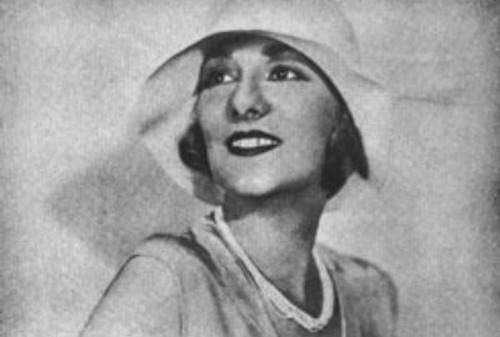
12. Marion Harris: “Who’s Sorry Now?”
As the genuine articles began to take their rightful place before the recording horn, the white women whose imitations of blues shouters had made the racist recording market safe for the blues began to move into more genteel forms of music-making, where Black women presumably couldn’t follow. (We’ll see about that.) Marion Harris, a constant presence here since 1916, has never sounded more polished and inexpressive—which is to say, whiter—than when warbling this ditty by dilettante composer Ted Snyder (who we won’t see again) and Tin Pan Alley lifers, lyricists Bert Kalmar and Harry Ruby (who we will). A song of vindictive triumph paced like a parlor ballad, it retained enough kick thirty-five years later to jumpstart the career of a teenager who sang like a grown woman.
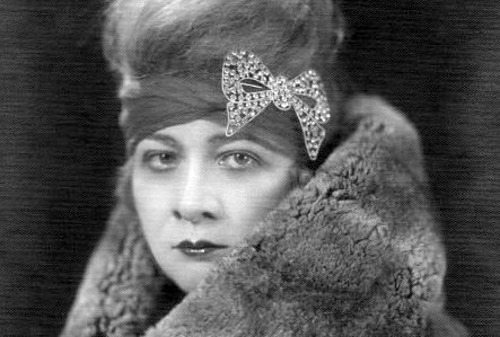
13. Sophie Tucker: “You’ve Gotta See Mamma Ev’ry Night (Or You Can’t See Mamma At All)”
Of course, La Tucker never followed the trends for white women singers. Now in her mid-thirties, she had built too firmly on a foundation of Coon shouting to move blithely into sweet girlish Tin Pan Alley fluff: but raucous faux-blues Tin Pan Alley fluff would do just as well. “You’ve Got to see Mamma” was written by popular hack Con Conrad (empresario Billy Rose is credited on lyrics), and in general outline it’s a good imitation of contemporary Black women’s songs, slightly saucy, humorously aggressive towards a wayward lover, and firmly self-respecting. But there’s no actual blues structure or emotion to it, which makes it all the better as a cloak for the indeterminately-raced Tucker to wrap herself in: big and brassy, but ultimately respectful of show-biz and social convention.

14. Wendell Hall: “It Ain’t Gonna Rain No Mo’”
The ways in which the desiccated remains of minstrelsy were shaped and pounded into country music are a major part of the recording history of the 1920s. “Ain’t Gonna Rain” is considered a folk song (four years later, Carl Sandburg would suggest that it dates to the 1870s), but Hall, a Midwestern vaudevillian who performed under the legend “The Red-Headed Music Maker,” punches out the verses, with nonstandard vocabulary and Southern rural hokum straight out of Uncle Remus, in a minstrel-inflected screech and yowl, a sound which would migrate into the “high lonesome” style which will characterize honky-tonk. But he’s also very much of his time: his instrument was not the banjo but the ukulele, the portable if not particularly versatile instrument which gave a fizzy, irrepressible soundtrack to the 1920s.
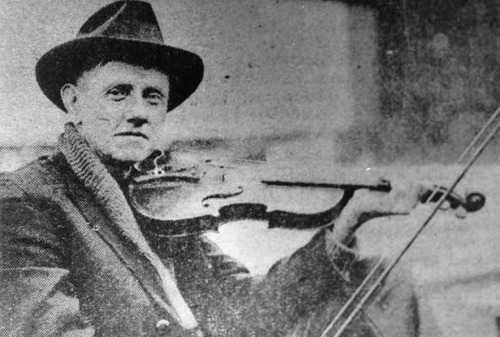
15. Fiddlin’ John Carson: “The Old Hen Cackled and the Rooster’s Gonna Crow”
Après Eck, le deluge: country fiddlers were still major entertainers in the rural communities where they set and called the dances, and as the South urbanized, they grew into bigger stars thanks to old-time fiddling conventions. The fifty-something Carson, of Atlanta, was hot enough stuff that he was a local fixture on the new medium of radio and appeared in newsreels. A sharp-eyed Atlanta distributor cajoled Okeh’s talent scout Ralph Peer into recording him in a rare acoustic-era location recording, a makeshift studio set up in an empty Atlanta storefront. Peer wasn’t happy with the results (he’d do better later), but the record, “Old Hen” b/w “Little Old Log Cabin in the Lane” (see 1907), sold out at the next convention. No hero, as we’ll see, Carson nevertheless lasted.
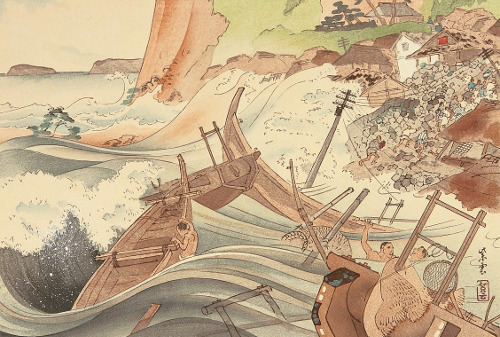
16. Asako Tanabe: “Sendo kouta”
As country music slowly pushes its way onto record, so too does the music frequently compared to it: Japanese enka, which (like country) originated in a specific milieu but has since broadened to mean any vaguely folkloric or traditional popular music. I’ve been unable to learn anything about the singer attributed here: 田辺朝子 is a common enough name that basic online searches are useless. But 船頭小唄 (often translated as “Ferryman’s Song”) was a major musical touchstone of the era, a street song which borrowed the melody of a Shinpei Nakayama composition. It became infamous in the wake of the Great Kanto Earthquake, said to have been predicted in the haunting, death-obsessed lyrics. A sentimental 1923 film of the same title inspired multiple recordings; this is the one posted to YouTube.

17. Mounira al-Madiyyah: “Asmar malak ruhi”
1923 was the first full year of nominal Egyptian independence from the British “protectorate” which had begun in 1882 and was formalized during the War to break Ottoman power. Although the British occupation would not be entirely ended until 1953, the promulgation of the first constitution and the convention of the first parliament in Cairo is worth commemorating here, with the voice of the first Muslim woman in the modern era to come to prominence as an entertainer in Egypt: before her (as throughout North Africa and the Middle East), the profession was limited to Jewish and Christian women. أسمر ملك روحي was one of her signature songs, one that has had long echoes in Egyptian light-entertainment history: “Dark King of My Soul” is one way to translate the title.

18. Mohammad el-Wahab: “Ma niish bahebbek”
Egyptian popular music was still only just being born: the September 1923 death at the age of 31 of café singer and musical-theater composer Sayed Darwish, whose melodies (some of which we will hear in future) borrowed Western structures and sometimes instrumentation in a break with classical Arabic formulas, is a useful demarcation point. Mohammad el-Wahab was a friend and close collaborator with Darwish in his last years, and would become perhaps the most important Egyptian popular musician of the twentieth century, but one. This early song, a light taqtuqa from the kind of genial musical romantic comedy which would come to form the backbone of the West and South Asian film industry, is an anti-love song performed in character as a rascal protesting (too much) that he only loves himself.

19. Marika Papagika: “Opou dis dio kyparissia”
The Anatolian Greek singer Marika Papagika was by now more or less the undisputed queen of the ex-Ottoman diaspora in New York City, despite continued challenges from Kiria Koula. Within the next year or so she would even open the first café-aman (and behind authority’s back, a speakeasy) in the Western hemisphere; but here, with her husband on cimbalom and other immigrant musicians on violin, cello, and percussion, she sings a song which takes its title from the Greek folk air “When You See Two Cypresses,” but hares off in other directions in the singing. It’s called a Zeïmpekiko (Anatolian Greek folk dance) on the label, but scholars, noting the modern fusions which New World residence has imparted to Papagika’s musical ecosystem, have called it an early example of rebetiko.
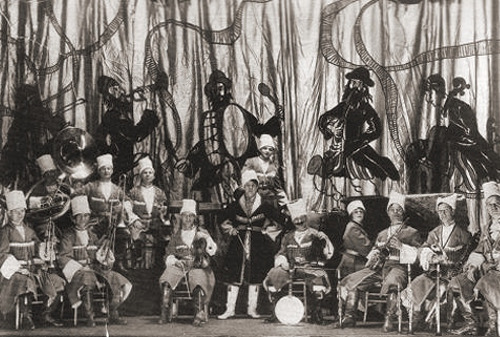
20. Naftule Brandwein’s Orchestra: “Doina and Nachspiel”
As we move further into the 1920s, the number of great recordings by the Eastern European Jewish artists who brought what we now call klezmer to the tenements of New York City will slowly decrease. Partly this is because of rapid assimilation and the inroads made by Jewish artists into mainstream US culture: the next generation of talented Jewish musicians were more likely to aspire to be Gershwin or Brice than Brandwein or Picon. But also, beginning in 1924, the country’s open (to Europeans) immigration policy was for the first time given a permanent numerical limit, heavily restricting (as it meant to) the number of new Jewish immigrants to the United States. There will be more klezmer records in future, but let this be a valediction for the first generation.

21. Isa Kremer: “Dwie Guitarre”
But there was a whole constellation of global Jewish culture which the policies set by a know-nothing Congress could not touch. Isa Kremer, the great Russian Jewish soprano, was born to bourgeois parents in what is now Moldova, but was publishing revolutionary poetry in Odessa as a teenager. She debuted as an opera singer in Italy; within a few years, she included Yiddish folk songs in her concert repertoire, supposedly the first woman to do so. The Russian Revolution left her without a home (her family had backed the moderates), and her peripatetic concert schedule brought her to the United States in 1922, where she was acclaimed by Jewish and non-Jewish audiences alike. This selection of Russian romans or “gypsy” music is illustrative of her clear voice and lively style.
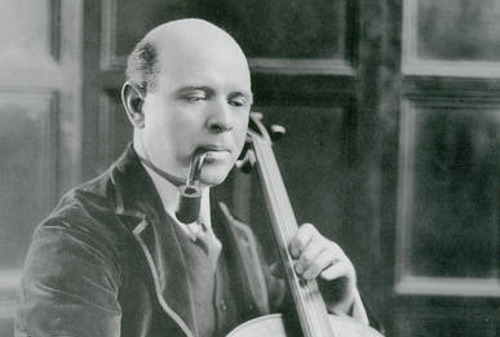
22. Pau Casals: “Kol Nidrei”
Another example of Jewish music having entered the concert canon: the German (Protestant) composer Max Bruch had composed this piece for cello and orchestra in 1880, the melody of the first section based on the Hebrew prayer recited during the evening service on Yom Kippur and that of the second on one of Isaac Nathan’s 1815 settings for Byron’s Hebrew Melodies. (Gentiles appropriating Jewish art and being reappropriated by Jews in turn has a long history.) The great Catalan cellist Pau Casals rendered it sensitively, accompanied only by Edouard Gendron on piano, for Columbia in 1923. In those years Casals was the preeminent cellist in Europe, recording in France and conducting an orchestra in Barcelona. An ardent Republican, he went into self-imposed exile when Franco came to power, and never returned.

23. Marian Anderson: “Deep River”
Only two years out of high school, and still a decade out from becoming world-famous as the greatest African-American contralto of the twentieth century, Marian Anderson recorded her first sides in December of 1923. Her repertoire even then included this Harry T. Burleigh arrangement of a classic spiritual, which would become one of her signature songs. “Deep River,” with a stark simplicity of melody and lyric which contain entire implied universes of emotion and history, is one of the essential, irreducible elements of Black American art. Anderson’s early low, throbbing performance, recorded the same year that hot jazz and the blues fully came into their own on record, after some fifty years of what historians call the Nadir, an era of horrific violence and terrorism toward Black citizens, still resounds today.
5 notes
·
View notes
Text
Assinada permissão de uso para o campo da Linha Leopoldina


Um pleito de mais de 20 anos da comunidade da Linha Leopoldina, no Vale dos Vinhedos, foi atendido neste sábado, dia 16. Em solenidade realizada na comunidade da Capela das Almas, foi realizada a assinatura do contrato de permissão de uso do campo da localidade pela Sociedade Recreativa e Cultural Leopoldina. O espaço de 8.377 m², poderá ser utilizado por 10 anos. A sociedade fica responsável pela manutenção, conservação e despesas como água, luz e quaisquer reforma. "O que estamos fazendo é muito mais do que esporte, é proporcionar que esta comunidade tenha este espaço como ponto de entretenimento, como um espaço para união das famílias no fim de semana", ressalta o Secretário de Esportes e Assistência Social, Eduardo Virissimo. Representando a Câmara de Vereadores, Volnei Christófoli comemorou a assinatura. "Hoje é um dia especial para essa comunidade, a entrega do campo é um pleito antigo, e ainda quando atuei como subprefeito acompanhei o esforço da administração Municipal para resolver e hoje poder concretizar esta entrega", destaca. Para o Prefeito Guilherme Pasin "representa a concretização de um pleito da comunidade, que uniu todos esforços para que nesta noite pudéssemos estar assinando este contrato de permissão de uso. Vejo estes meninos do Internacional da Leopoldina que praticam esporte nesta localidade, daqui poderemos ver grandes talentos se formando", disse. Também estiveram presentes o Presidente da Câmara, Rafael Pasqualotto, vereador Edson Biasi, presidente da Sociedade Recreativa e Cultural Leopoldina, Paulo Giordani, vice Marcos Valduga, secretários Municipais e comunidade. 41ª academia entregue Durante o encontro, também, foi realizada a entrega oficial da academia ao ar livre da localidade. Os aparelhos proporcionam a prática de atividades físicas através de movimentos naturais e amplos, que contribuem no alongamento e não precisam de uma roupa específica de ginástica para usá-los, apenas uma vestimenta confortável e muita disposição, o que de certa forma desperta o gosto pela atividade física. A instalação das academias contam com ações integradas das Secretarias de Juventude, Esporte e Lazer, Viação e Obras Públicas, Secretaria de Meio Ambiente e Secretaria de Saúde. "A comunidade já usufrui deste espaço, todas manhãs podemos acompanhar os moradores fazendo exercícios. Tenho a certeza que estes equipamentos serão o diferencial na vida de muitas pessoas, que poderão sair do sedentarismo e próximo à suas casas praticarem alguma atividade física", afirma o subprefeito do Vale dos Vinhedos, Marciano Batistelo. Com a entrega dos equipamentos, 41 locais já dispõe do espaço, contemplando os bairros Borgo, Botafogo, Cohab, Imigrante, Licorsul, Progresso, Vila Nova, Fátima, Maria Goretti, Santa Marta, São João, Vila Nova 3, São Roque, São Bento, Santa Helena, Zatt, Vinosul, Conceição, Barracão, Fenavinho, Panazzolo, Distrito de Faria Lemos, Praça Centenário, Linha Alcântara, Verona, Praça das Rosas, Distrito de São Pedro, Associação dos Servidores, Praça Vico Barbieri, Av. Osvaldo Aranha, Capela das Almas, Ginásio Municipal de Esportes, Distrito de Tuiuyt, 8 da Graciema e Loteamento Bertolini. Foto: José Martim Estefanon Read the full article
0 notes
Link
SAN BENEDETTO – Il Comune di San Benedetto del Tronto, in collaborazione con l’Associazione Culturale Verticale D’Arte e Stefano Papetti, presenta l’appuntamento speciale conclusivo con i curatori di Vedo nudo. Arte tra seduzione e censura presso la Palazzina Azzurra a San Benedetto del Tronto.
L’evento espositivo nella Palazzina Azzurra ha superato di misura le 5.000 presenze durante l’estate ed ha concluso la trilogia promossa dal Comune di San Benedetto del Tronto. Dopo i successi degli scorsi anni con “Uomo in mare. De Chirico, Licini, De Pisis, Warhol e i grandi maestri dell’Arte” e “Abbronzatissima.
Glamour e arte all’ombra delle Palme”, la mostra ha fatto registrare visitatori interessati ed appassionati al tema da tutte le parti del territorio marchigiano e anche d’Italia.
A cura di Stefano Papetti e dell’Associazione culturale Verticale d’Arte (Elisa Mori e Giorgia Berardinelli) l’esposizione Vedo Nudo. Arte tra seduzione e censura, con il patrocinio dell’ENIT – Ente Nazionale del Turismo, della Regione Marche, della Fondazione Marche Cultura e del Comune di San Benedetto del Tronto, si è posta come obiettivo lo sviluppo di un percorso storico artistico -ma anche concettuale – che ha accompagnato lo spettatore a scoprire le molteplici espressioni e trasformazioni dei contenuti legati al nudo e alla sua percezione, dai primi del Novecento ai giorni nostri, ponendo al centro forme d’arte quali pittura, scultura, video installazioni, grafica e fotografia, ed ha coinvolto il visitatore in un gioco di seduzione sottile in stretta connessione con le opere.
Il il tutto senza mai dimenticare l’aspetto ironico, e in alcuni casi la componente di sensibilizzazione verso un tema che può anche essere identificato come controverso ma che da sempre ha stuzzicato la mente e la fantasia umana. Le opere, che si collocano nei due piani espositivi della Palazzina Azzurra, provengono da prestigiose collezioni pubbliche e private, e da artisti affermati nell’ambito dell’arte contemporanea a livello nazionale e internazionale.
A partire dall’Estasi di Giuseppe Renda, un busto di donna in bronzo realizzato dallo scultore nel 1890, il percorso espositivo prosegue in un susseguirsi di dipinti e disegni dove figure di nudi maschili e femminili dominano la scena: dall’olio su tela Nudo femminile di Osvaldo Licini, all’olio su tavola di Cagnaccio San Pietro che ritrae una donna allo specchio, passando per una Maddalena di Renato Guttuso e le ancestrali sculture della serie ‘tagli’ di Lucio Fontana per arrivare ai giorni nostri con il nudo inquietante di Oliviero Toscani per la campagna control’anoressia e il grande acrilico su tela di Giuseppe Veneziano, dal titolo Novecento 2009 che riprende la tradizione iconografica dell’allegoria restituendoci, in una immagine grottesca, i tratti dei protagonisti della storia del secolo scorso.
Tra gli altri artisti in mostra grande spazio è stato dato alla fotografia con Gian Paolo Barbieri (la cui mostra omaggio realizzata dal Consiglio regionale della Lombardia e curata dalla Fondazione Gian Paolo Barbieri in questi giorni a Milano ha avuto un incredibile successo di pubblico), Piero Gemelli, Giuseppe Mastromatteo e un’opera che ritrae il noto critico Vittorio Sgarbi, e ancora il video Peep Show di Rino Stefano Tagliafierro, le ceramiche di Andrea Salvatori, le due sculture del quartetto The Bounty Killart tra le quali campeggia un inedito creato ad hoc per la mostra, Claudio Cintoli, Scipione (Gino Bonichi).
L’incontro conclusivo di sabato 5 ottobre sarà un’occasione per ripercorrere il percorso espositivo attraverso le parole e le curiosità narrate dai tre curatori e vedrà la speciale presenza del Concerto Bandistico “Città di San Benedetto del Tronto e majorettes”.
0 notes
Text
Necrologia do dia 10 de setembro de 2019 em Piracicaba e região
Grupo Unidas
Antonia Marquezin Rios Faleceu dia 07 p.p., na cidade de Rio das Pedras – SP, contava 97 anos, filha dos finados Sr. Antonio Marquesin e da Sra. Porfirina Domingues, era viúva do Sr. Jose Rios; deixa os filhos: Odilma Piaggio casada com o Sr. João Piaggio; Carmen de Paula viúva do Sr. Mario de Paula; Virginia Rios Rocha Lima viúva do Sr. Jose Nadir Rocha Lima; Oswaldo Rios casado com a Sra. Ivone Rios; Valdir Marquesin; Claudete Tereza Rios casada com o Sr. Vinicius Roberto M. Yado e Jose Rios Filho já falecido, deixando viúva a Sra. Margarida Rios. Deixa netos, bisnetos, tataranetos, demais parentes e amigos.Seu sepultamento foi realizado dia 07 p.p., tendo saído o féretro às 16h00 do Velório do Cemitério Municipal de Rio das Pedras, em jazigo da família.
Antonio Polloni Faleceu dia 07 p.p., nesta cidade, contava 92 anos, filho dos finados Sr. Victorio Polloni e da Sra. Carolina Rivabem, era viúvo da Sra. Olivia Novaes Polloni; deixa os filhos: Jose Antonio Polloni; Sonia Carolina Polloni; Isabel de Jesus Polloni; Elza Cecília Polloni de Assis casada com o Sr. Flavio B. de Assis; Maria Helena de Novaes Polloni e Marcelo Claudemir Polloni. Deixa netos, bisnetos, demais parentes e amigos.Seu sepultamento foi realizado anteontem, tendo saído o féretro às 09h00 do Velório da Saudade, sala “02” para o Cemitério da Saudade, em jazigo da família.
Verelene Alves Faleceu dia 07 p.p., na cidade de São Pedro – SP, contava 71 anos, filha dos finados Sr. Jose Emidio Alves e da Sra. Jocelina Castro Alves, era viúva do Sr. Ponpilho Santos Souza. Deixa demais parentes e amigos. Seu sepultamento foi realizado anteontem às 11h00 no Cemitério de São Pedro – SP, em jazigo da família.
Giovanni Baptista Paschoal Morelli Faleceu anteontem, na cidade de São Pedro/SP, contava 95 anos, filho dos finados Sr. Giovanni Morelli e da Sra. Reda Brazilina, era viúvo da Sra. Hortencia Mendia Morelli; deixa os filhos: Helide Morelli Pereira casada com o Sr. Jose Roberto Pereira e Hieda Mendia Morelli Mancini casada com o Sr. Nivaldo Antonio Mancini. Deixa cunhada, sobrinhos, netos, bisneto, demais parentes e amigos.Seu sepultamento foi realizado ontem, tendo saído o féretro às 09h00 do Velório Municipal de São Pedro para o Cemitério Parque de São Pedro/SP, em jazigo da família.
Geraldo Pereira da Silva Faleceu ontem, nesta cidade, contava 66 anos, filho dos finados Sr. Jose Pereira da Silva e da Sra. Maria Humbelina de Jesus, era casado com a Sra. Rosalina Rodrigues da Silva; deixa os filhos: Eli Rodrigues da Silva casado com a Sra. Deniele Aparecida B. da Silva e Tiago Estevão da Silva. Deixa demais parentes e amigos.Seu sepultamento foi realizado ontem, tendo saído o féretro às 16h00 da sala 03 do Velório do Cemitério da Vila Rezende, para a referida, em jazigo da família.
Agenor Christofoletti Faleceu ontem, nesta cidade, contava 79 anos, filho dos finados Sr. Guilherme Christofoletti e da Sra. Bernardina Pompermayer Christofoletti casado com a Sra. Julia Degaspari Christofoletti; deixa os filhos: Marcos Christofoletti casado com a Sra. Doroti Stenico Christofoletti; Jose Vanderlei Christofoletti casado com a Sra. Daiana Maria de Oliveira Christofoletti; Eliana de Fátima Christofoletti Degaspari casada com o Sr. Edesio Jose Degaspari; Vania Maria Christofoletti e Carina Christofoletti Degaspari casada com o Sr. Luis Carlos Degaspari. Deixa netos, demais parentes e amigos.Seu sepultamento foi realizado ontem, tendo saído o féretro às 15h00 da Igreja de Santa Olímpia para o Cemitério Parque da Ressurreição, em jazigo da família.
Antelminia Vicente da Silva Faleceu ontem, nesta cidade, contava 85 anos, filha dos finados Sr. Antonio Vicente da Silva e da Sra. Augusta Olimpia da Silva; Deixa a filha: Iracema Camolesi Gomes da Silva casada com o Sr. Eliel Gomes da Silva. Deixa demais parentes e amigos.Seu sepultamento foi realizado ontem, tendo saído o féretro às 17h00 da sala “03” do Velório do Cemitério Municipal da Vila Rezende, para a referida necrópole em jazigo da família.
Maria Jose Chagas Faleceu ontem, nesta cidade, contava 74 anos, filha dos finados Sr. Luiz Chagas e da Sra. Rosa de Campos Chagas, era casada com o Sr. Osvaldo Martins; deixa os filhos: Edson da Silva Santos casado com a Sra. Marli Cremente Santos; Edna da Silva Santos Ferreira casada com o Sr. Oderci Alves Ferreira Filho; Adilson da Silva Santos; Ademir da Silva Santos casado com a Sra. Laudiceia Santos; Wagner da Silva Santos casado com a Sra. Inaiara Santos; Agnaldo da Silva Santos casado com a Sra. Itaciara Santos e Eliana da Silva Santos. Deixa irmãos, sobrinhos, netos, bisnetos, demais parentes e amigos. Seu sepultamento foi realizado ontem, tendo saído o féretro às 16h00 do Velório da Saudade, sala 04 para o Cemitério da Saudade, em jazigo da família.
Enoque Jose de Souza Faleceu anteontem, nesta cidade, contava 90 anos, filho dos finados Sr. Alvino Jose de Souza e da Sra. Inez Maria Jose, era casado com a Sra. Maria Alves de Souza; deixa os filhos: Francisco Alves de Souza casado com a Sra. Maria das Dores de Souza; Jose Enoque de Souza casado com a Sra. Maria Betania Pereira de Souza; Elias Enoque de Souza casado com a Sra. Maria Olimpia Regazzo de Souza; Isabel Ramos de Souza casada com o Sr. Jonas Ramos de Souza; Ana Dias Feitosa casada com o Sr. Aldo Dias Feitosa; Luzinete Alves Pereira casada com o Sr. Jose Roberto Pereira e Abrão Alves de Souza casado com a Sra. Eliciane Cristina da Silva. Deixa netos, bisnetos, demais parentes e amigos.Seu sepultamento foi realizado ontem, tendo saído o féretro às 16h00 do Velório Parque da Ressurreição, sala “C” para o Cemitério Municipal da Vila Rezende, em jazigo da família.
Ariovaldo Barboza Leme dos Santos Faleceu ontem, na cidade de Rio das Pedras – SP, contava 66 anos, filho dos finados Sr. Avelino Barboza Leme dos Santos e da Sra. Margarida Beltrame dos Santos, era casado com a Sra. Maria Antonia Custodio dos Santos; deixa os filhos: Ricardo e Luiz Augusto. Deixa netos, demais parentes e amigos. Seu sepultamento será realizado hoje, saindo o féretro às 09h00 do Velório do Cemitério Municipal de Rio das Pedras – SP, para a referida necrópole em jazigo da família.
Grupo Bom Jesus
Ari Marques Faleceu dia 07 pp na cidade de Piracicaba aos 57 anos de idade e era filho do Sr. Luiz Marques, falecido e da Sra. Luzia Ferreira Marques. Deixa irmãs, sobrinhos e demais parentes. O seu corpo foi transladado em auto fúnebre para a cidade de Rio das Pedras e o seu sepultamento deu-se anteontem as 14:00 hs, saindo a urna mortuária do Velório Municipal de Rio das Pedras, seguindo para o Cemitério Parque da Paz, em jazigo da família.
João Batista Barbieri Faleceu dia 07 pp na cidade de Piracicaba, aos 66 anos de idade e era casado com a Sra. Maria Teresa Antunes Barbieri. Era filho do Sr. Luiz Barbieri e da Sra. Aurora Carli Barbieri, ambos falecidos. Deixou os filhos: João Luiz Barbieri, Luís Eduardo Barbieri e Carolina Barbieri. O seu sepultamento deu-se anteontem as 10:00 hs, saindo a urna mortuária do Velório da Saudade – Sala 03, seguindo em auto fúnebre para o Cemitério Municipal de Laranjal Paulista, em jazigo da família.
Durvalino Luís Bortoleto Faleceu anteontem na cidade de Piracicaba aos 56 anos de idade e era casado com a Sra. Euclidia aparecida Tararan Bortoleto. Era filho do Sr. Jose Maria Bortoleto, falecido e da Sra. Maria Conceição Correia Bortoleto. Deixa os filhos: Lucilene Andreia Bortoleto casada com Jeferson De Favari, Robson Luís Bortoleto e Luciana Aparecida Bortoleto casada com Sidinei Machado Paiva. Deixa também 02 netos. O seu sepultamento deu-se anteontem as 17:00 hs, saindo a urna mortuária do Velório da Saudade – Sala 01, para o Cemitério da Saudade, em jazigo da família.
Fernando Lissi Faleceu anteontem na cidade de Saltinho aos 40 anos de idade e era casado com a Sra. Milena Rosada Lissi. Era filho do Sr. Domingos Antônio Lissi e da Sra. Claudinete Therezinha Tararan Lissi. Deixa a filha: Bianca Maria Lissi. O seu sepultamento deu-se anteontem as 16:00 hs, saindo a urna mortuária do Velório Municipal de Saltinho, seguindo para o Cemitério Municipal naquela localidade, em jazigo da família.
Nilson Célio Turco Faleceu anteontem na cidade de Piracicaba aos 46 anos de idade e era filho do Sr. José Turco e da Sra. Olga Amaro Turco. Deixa irmãos, demais parentes e amigos. O seu sepultamento deu-se ontem as 17:00 hs, saindo a urna mortuária do Velório Municipal da Vila Rezende – Sala 01, em jazigo da família.
Marcos Antônio Barboza Dias Faleceu anteontem na cidade de Piracicaba aos 62 anos de idade e era casado com a Sra. Elza de Arruda Leite Dias. Era filho do Sr. Justino Barboza Dias e da Sra. Theresa do Amaral Dias, ambos falecidos. Deixa os filhos: Thiago Leite Dias e Thais Leite Dias. Deixa também 01 neto e demais parentes. O seu sepultamento deu-se ontem as 14:00 hs, saindo a urna mortuária do Velório Municipal do Cemitério da Vila Rezende – Sala 01, em jazigo da família.
Michele Vanessa da Silva Faleceu anteontem na cidade de Piracicaba, aos 34 anos de idade e era filha do Sr. Antônio da Silva e da Sra. Maria Antônia Dias da Silva. Deixa os filhos: Julia, Gabriel e Leonardo. O seu sepultamento deu-se ontem as 10:00 hs, no Cemitério Municipal da Vila Rezende, em jazigo da família.
João Batista Marcolino Faleceu ontem na cidade de Rio Claro, aos 60 anos de idade e era casado com a Sra. Marta Maria da Silva Marcolino. Era filho do Sr. Joaquim Marcolino Galdino e da Sra. Diorcilia Maria de Jesus, falecidos. Deixa os filhos: João e Marcos. O seu corpo foi transladado em auto fúnebre para a cidade de Santa Gertrudes e o seu sepultamento deu-se ontem as 16:30 hs saindo a urna mortuária do Velório do Cemitério Municipal de Santa Gertrudes , em jazigo da família.
O post Necrologia do dia 10 de setembro de 2019 em Piracicaba e região apareceu primeiro em PIRANOT.
0 notes
Text
Bagnoli nella Hall of Fame del calcio italiano. Sboarina: "Leggenda sportiva"
Bagnoli nella Hall of Fame del calcio italiano. Sboarina: “Leggenda sportiva”
Il sindaco di Verona Federico Sboarina e l’assessore allo sport Filippo Rando hanno incontrato oggi, 20 dicembre, a palazzo Barbieri l’ex allenatore e calciatore Osvaldo Bagnoli.
Durante l’incontro è stata consegnata a Bagnoli una targa di riconoscimento per il suo ingresso nella Hall of Fame del calcio italiano, riconoscimento istituito nel 2011 dalla Figc e dalla Fondazione Museo del Calcio,…
View On WordPress
0 notes
Photo
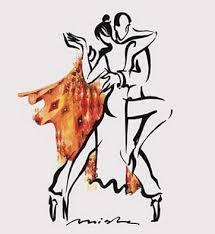
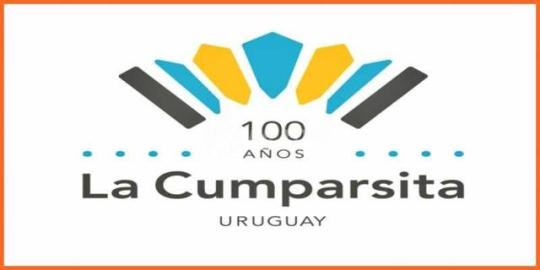

April 19 held 100 years cumparsita the 2017 is year Memorial Centennial of cumparsita. The cumparsita is a Tango which tune was created and written between the end of the year 1915 and early 1916 by the musician Uruguayan Gerardo Matos Rodriguez. Soon after, and to order Matos Rodriguez, received musical arrangements Robert firpo who subsequently to this, touched her next to his Orchestra for the first time in public. Your letter most popular belongs to argentinopascual contursi. Considered Tango more spread level mundial.el singer Carlos gardel and recognized directors Orchestra - from John d'arienzo up Osvaldo Pugliese - added to your repertoire the cumparsita successfully. The cumparsita is the anthem popular and cultural Uruguay, from a law passed in 1998 by the Legislature Uruguayan. History the cumparsita was created initially as a way, made up of the young student architectural Gerardo Matos Rodriguez - desconociéndose accurately the date of your authorship, which is estimated from the late 1915 and early 1916 - for comparsa Carnival made up of the Federation students of the Uruguay, precisely to use it in celebrations who were ready to take place. It was released - in his first opportunity - by Roberto firpo in coffee giralda Montevideo in the year 1916. Rosario infantozzi durán puts in mouth of his uncle Matos Rodriguez, these words: "I think it never I could make another Tango like ... later compuse other tangos and other music, some perhaps better than the first. But it (the cumparsita) contains a world of illusions and sadness, of dreams and nostalgia you only live on Twenty years. It was a Magic moment. And magical was your destination. 'Many mysteries around it, many lawsuits! Rivers ink and kilometers paper has been used for enaltecerlo or do pieces" (book I, Matos Rodriguez, that of "the cumparsita", Rosario infantozzi durán). Although matter of debate as for the year in 1916 firpo premiered in coffee giralda Montevideo the cumparsita, and conducted the recording oldest item (Odeon 483). Firpo said whenever he included the original subject, who presented Matos Rodriguez, a part of their tangos the gaucha Manuela and curda complete, and a section of the "miserere ..." Giuseppe Verdi (fourth Act of "IL trovatore"), and we proposed sign it together, what Matos opposed. Firpo told that time historical as follows: in 1916 I was acting in coffee giralda Montevideo, when a day came a Lord accompanied by a fifteen boys - all students - to tell me that brought a Withers and wanted me to the fix because thought there was a Tango. The wanted to night, because I needed a boy named Matos Rodriguez. In the score in two by four seemed a bit the first part and in the second there was nothing. Got a piano and I remembered two tangos mine compounds in 1906 that had not had any success: "the gaucha Manuela" and "curda complete". And you put a little each. The night what I played with "bachicha" deambroggio and "Tito" roccatagliatta. It was a apotheosis. To Matos Rodriguez what pasearon in Bier. But the Tango forgot, its great success began when you adosaron the letter of Enrique Maroni and Pascual contursi. partitura of cumparsita. Until 1924 the cumparsita was a Tango instrumental "completely forgotten" according to the judgment of Juan Carlos marambio Catan. Precisely, for lack letter, was not executed by the orchestras so that accompanied the boom called Tango-song (whose maximum exponent out Carlos gardel). Matos, in turn, had sold the rights to the signing Breyer hnos., Representative of the House ricordi in Argentina. 6 June 1924, the company Leopoldo simari premiered in the old theater Apollo a obrita Pascual contursi and Maroni entitled a program Cabaret. For those years there was no plays of stamp popular not included the premiere of one or two tangos to ensure success with the public. In table second from this work, the singer John Ferrari sang first verses composed of both authors on the music of the cumparsita: "if you know / still within my soul ...". The room was very short time in poster because neither this new Tango or the bitter satire of mine Ford's voice actress Luisa morotti were able to save your mediocrity. However the new Tango was a success unexpected. Carlos gardel, River plate quintessential, began to sing that same year and recorded for Odeon with guitars Ricardo and Barbieri. Hence in over were rediscovered values musical and, as said Victor soliño, "the cumparsita began to climb the few seats that you were missing go to be placed in the summit of glory." Matos knew in Paris - by mouth of canaro - of these news about your Tango. Resorted to help Dr. calatayud, a young lawyer Uruguayan that carried forward the legal action for undo the sale of the rights to Breyer hnos. And prohibit to touch the cumparsita with letters or verse that were not which the same Matos had signed as your authorship: "the cumparsa / of misery endless parades ...". This letter, which was deposited in the National library 9 November 1926, was carried to disk by the singer Roberto Diaz with Orchestra provincials, but is not the most widespread. Dead Pascual contursi on 16 March 1932, Hilda briano (his widow) and Enrique P. Maroni (mate) began legal action for damages against Matos Rodriguez recognition of rights as co-authors of the work in question. It was a very long lawsuit that resolved when also Matos died. On 10 September 1948 Francisco canaro issued its award to which had been submitted finally the parties, leaving zanjadas issues concerning percentages intellectual property right execution, fotomecánicos, and inclusion in movies. Thanks to this award, the benefits that this Tango generates is distributed in 80% for heirs of Uruguayan Matos and the remaining 20% for heirs of the Argentine contursi and Maroni. The same opinion also decided that those who want to register future editions of cumparsita can do it using only one of the two letters referred, prohibiéndose the use of any other letter. Latter forecast award responds to the fact that this Tango has at least two letters and maybe a third, which is presumed written with the intention to be attached to the music becho. Other letters the letter oldest belongs to Alexander the field, a brother of the Federation students of the Uruguay in which militaba Matos Rodriguez the time compose your Tango. Was published by the Journal soul singing in 1926 and suspected that is the first letter written for cumparsita on request of the author, at default of Victor soliño (who would have done originally commissioned). Also' soul singing published on 19 November 1957 a note of Antonio sang entitled the history of the Tango, in which transcribed few notes of Nicholas olivari on cumparsita. Olivari mentioned of "the first letter that wrote" for this Tango, work of the poet and man theater Augustus Mario Delfino. No one or another letter succeeded nor were sung or carried to disk by interpreter any. Both refer to a comparsa carnavalera with verses evocativos of the days of youth. Actually all letters known transiting commonplace and ripiosos. Fifth letter is written in English. It's work of hear Paul and was published - according Robert selles - in 1937 by the House editor Edward B. marks music Corporation new York under the title of the masked one (the masked). Says selles than in the score has also the title original Matos Rodriguez. The letter repeat the same argument follow Corso Anselm aieta and Francisco García Jimenez. Controversy was used this music for the entrance of the delegation sports and athletes of the Argentine Republic Olympics Sydney 2000, which led to the chagrin of Uruguayan government.
0 notes
Audio
#NowPlaying Gato Barbieri y otras músicas de Osvaldo Tornello
0 notes
Text
CORDOBA - LISTA DE NOMINADOS PREMIOS CARLOS 2017 - #CARLOS, #CBA, #CORDOBA, #PREMIOS, #Showsargentinos
Publicado en http://bit.ly/2ktRiMN
CORDOBA - LISTA DE NOMINADOS PREMIOS CARLOS 2017
la entrega de los Premios Carlos 2017, tendrá lugar el próximo lunes 6 de febrero desde las 18 horas en los Jardines Municipales con transmisión en vivo para todo el país por la Televisión Pública Argentina. El listado completo de rubros y nominados es el siguiente: Mejor Sonido -Bien Argentino -Mahatma -Genias, las mil y una Fátima Mejor Espectáculo Infantil -El Ático Encantado -Canciones de la granja -Mi amiga la oscuridad -El brujito de Gulubu Mejor Libro -Tristán e Isolda -Mi familia es así -Citas peligrosas -El Quilombero Mejor Labor Humorística - Mudo Esperanza – El show del caos - Mario Fassi – Mario Fassi con humor -Marcelo Josset – Bien argentino -Miguel Martin – Oficial Gordillo. Delincuente del Humor -Adrian Gómez – Fierito… Pero Gracioso Mejor Cantante Femenina -Sandra Guida – Tango Corrupto -Claribel Medina – Noches de Bohemia y Son -Ana Paula Rodríguez - Mahatma -Yanina Bulgheroni - Bien Argentino Mejor Cantante Masculino -Franco Friguglietti - Mahatma -Carlos Habiague - Por Amor al Tango -Oscar Lajat - Tango Corrupto -Marcelo Iripino - Bien Argentino Mejor Escenografía Corpórea -Abracadabra -Mi familia es así -El Quilombero -TOC-TOC Mejor Escenografía Virtual -Genias, las mil y una Fatima -Mahatma -La Gran Revista de Carmen Mejor Unipersonal y/o Stand Up -“Yayo, sin filtro… regresa la bestia” – Yayo Guridi -Julián Labruna Stand Up – Julián La Bruna -Minas jodidas – Mar Tarres -“Peroncho, un año de m” – Emanuel Rodríguez Mejor Actor de Reparto -Bicho Gómez - Abracadabra -Alejando Müller – El Quilombero -Tomas Fonzi - Abracadabra -Sebastian Almada – Sálvese quien pueda -Martin Salazar – Toc- Toc Mejor Actriz de Reparto -Noelia Marzol – Los Corruptelli -Liliana Pecora – Los Corruptelli -Flor Vigna - Abracadabra -Mercedes Oviedo – El Quilombero -Laura Bruni – Mi Familia Es Así Figura Destacada Femenina -Graciela Alfano -Carmen Barbieri -Iliana Calabro Figura Destacada Masculina -Nicolás Cabre -Federico Bal -Pedro Alfonso Mejor Humorístico Musical -Camilo y Nardo – Herederos del humor -Tango Corrupto -Fierito… pero gracioso -Genias, las mil y una Fatima -Cacho Buenaventura Show Mejor Iluminación -Genias, las mil y una Fatima -Mahatma -El Quilombero -Abracadabra -La Gran Revista De Carmen Mejor Vestuario -Club Capo Cabana -Mahatma -Bien Argentino -La Gran Revista de Carmen Mejor Dirección de espectáculo -Carmen Barbieri – La Gran Revista de Carmen -Flavio Mendoza - Mahatma -Angel Carabajal – Bien Argentino -Norberto Marcos – Genias, las mil y una Fatina -Walter Soares – Club Capo Cabana Mejor Dirección Teatral -Marcelo Caballero – Tristán e Isolda -Marcelo Cosentino – Mi Familia es Asi -Rene Bertrand – Citas Peligrosas -Arturo Puig – El Quilombero -Carlos Olivieri - Abracadabra Mejor Atracción en Espectáculo -Mariquena Del Prado – La Gran Revista de Carmen -Andres Teruel – La Gran Revista de Carmen -Pietro Vicentini e Ignacio Friguglieti - Mahatma -Fernando San Martin - Genias, las mil y una Fatima -Belen Pouchan - Mahatma Mejor cuerpo de baile -Mahatma -Bien Argentino -La Gran Revista De Carmen -Genias, las mil y una Fatima Mejor/es músico/s en vivo -Bocha Campo–Noches de Bohemia y Son -Tango Corrupto -Genias, las mil y una Fatima -Bien Argentino -Mahatma Revelación masculina de la temporada -Marcelo Iripino – Bien Argentino -Andrés Teruel – La Gran Revista de Carmen -El Polaco - Abracadabra -Matias Pisera Fuster – Tristán e Isolda Revelación femenina de la temporada -Flor Vigna - Abracadabra -Florencia Prada – Tristan e Isolda -Noelia Marzol – Los Corruptelli Mejor espectáculo de concert -Locas de Humor -Club Capo Cabana -Trastornado por el Humor Mejor espectáculo de transformismo -Dinamita -Ponele Brillo al Humor Mejor bailarín -Facundo Mazzei - Mahatma -Fernando Bertona – Bien Argentino -Agustin Reyero – La Gran Revista de Carmen -Cristian Chirino – Bien Argentino -Mati Quinteros – Locas De Humor Mejor bailarina -Adabel Guerrero – Bien Argentino -Josefina Musso – Bien Argentino -Eugenia Speroni – Genias, las mil y una Fatima -Soledad Bayona - Mahatma -Claudia Fernandez – Trastornado por el Humor Mejor comedia -Abracadabra -Mi Familia es así -Citas Peligrosas -El Quilombero -Sálvese Quien Pueda Mejor coreografía -Paola Garcia - Genias, las mil y una Fatima -Facundo Mazzei - Mahatma -Angel Carabajal - Bien Argentino -Yasmin Corti - La Gran Revista de Carmen Mejor actor -Osvaldo Laport – Sálvese Quien Pueda -René Bertrand – Citas Peligrosas -Jose Quiroga – Extraños Hábitos -Marcelo De Bellis – El Quilombero -German Kraus – Citas Peligrosas Mejor actriz -Flor De La V – Sálvese Quien Pueda -Betiana Blum – Mi familia es así -Maria Rosa Fugazot – Citas peligrosas -Sabrina Carballo – Toc-Toc -Roxana Merlino – Un Drama Turbio Mejor producción integral -La Gran Revista De Carmen -Mahatma -Bien Argentino -Abracadabra -Genias, las mil y una Fatima Además de dichas nominaciones, el jurado hará distinciones especiales: -Carlos 2017 especial del jurado -Carlos 2017 “Ramón Yarda” -Carlos 2017 a la Trayectoria -Carlos de la Gente -Carlos de Plata -Carlos de Oro Cabe recordar que la entrega de los Premios Carlos 2017, tendrá lugar el próximo lunes 6 de febrero desde las 18 h en los Jardines Municipales con transmisión en vivo para todo el país por la Televisión Pública Argentina. La transmisión comenzará a las 18 y se extenderá hasta las 21 horas. A partir de las 17:45 h comenzarán a desfilar los artistas que protagonizan esta temporada teatral por la alfombra roja.
0 notes
Photo

#diadelmusicoargentino #luisalbertospinetta FELIZ DÍA DEL MÚSICO NACIONAL ARGENTINO Les mando un abrazo enorme a todos los músicos amigos míos y a los que todavía no lo son, también. Hoy es un día especial para todos los que hacemos música en nuestro país, ya que este día y todos los 23 de enero, se celebra el "Día del Músico Nacional", en conmemoración a uno de los más grandes músico, cantante y compositor, que nos dio esta tierra, LUIS ALBERTO SPINETTA, orgullo Nacional. FELIZ DÍA PARA: Marcos Ludueña, (Ale Facha Polero, Mauricio Polero, Cristian Alejandro Polero, Grupo Los Del Plata),Susi Cané, Paola Ruiz Díaz, Juan Antonio Marquez, Tin Roig, José y Carlos Barrientos "Dúo Los Cardenales", Marina De Mattei, Beatriz BenitezLeo Marina, Javier Santarcangelo, Mario Santarcangelo, Walter Diaz, Alejandra Andrea Insua, Sandra Mamani, Gustabo Ziero, Agostina Semino Cantante, Ana Maria Marzabal, Edith Rodriguez II, Osvaldo Rodriguez, Marcelo Figueroa Eventos, Fortuna Gabriele, BelénySol de los Milagros, Maximiliano Cruz Serafini, Lunara Cantante, Maria Ortiz Cantante, Beatriz Benitez, Olivia Grey Cantante, Laura Lucìa Castro, Juan Bernachea, Maximiliano Cruz Serafini, Juan Flores, Maximiliano Barreto, Angie Albornoz, Agustina Diaz, Martín Reynoso II, Marcelo Figueroa, Marcelo Alfonzo, Marcelo Alfonzo y su Grupo Vuelo Blanco, Maria Eugenia Barbieri, Elena Olivera, Mora Verchelli, Lucas Morales, Cristian Cavalli, Rosana Del Valle Albertoli, Romina Bianco y a todos los que no he nombrado pero que siempre están en mi corazón.
0 notes
Text
Belgrano enfrenta a Sportivo en el Gigante
Belgrano juega ante Sportivo Belgrano de San Francisco en el Gigante de Alberdi. Se enfrentan los titulares en el primer partido de dos tiempos de 40 minutos.
Belgrano: Nahuel Losada; Juan Barinaga, Gino Barbieri, Santiago Morales, Axel Ochoa; Tomás Asprea, Hernán Bernardello, Valentín Barbero; Juan Ruiz Gómez, Pablo Vegetti, Ulises Sánchez.
Sortivo B.: Matías Quinteros; Emanuel Urquiza, Tomás Rossi, Mauro Orué, Osvaldo Arroyo; Andrés Alderete, Martín Argüello; Nicolás López Macri, Juan Pablo Francia, Román Strada; Ezequiel .

evy9iqixcaqu3bh_1615033927.jpg
source https://mundod.lavoz.com.ar/futbol/belgrano-enfrenta-a-sportivo-en-el-gigante
0 notes
Photo

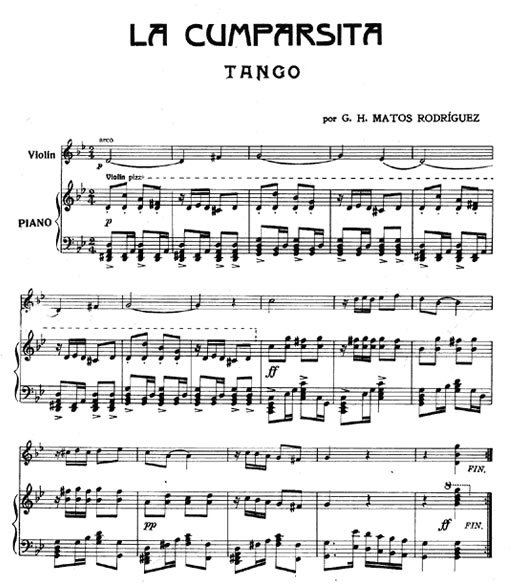
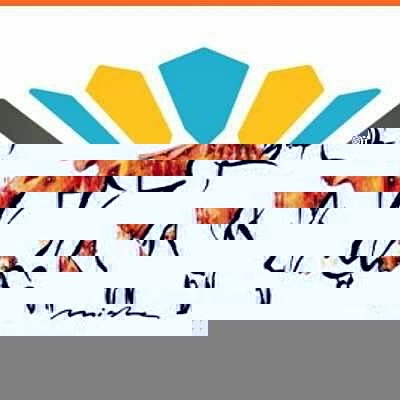

#19DeAbril se celebran #100AñosCumparsita el 2017 es año de conmemoración del Centenario de #LaCumparsita #100añoslacumparsita La cumparsita es un tango cuya melodía fue creada y escrita entre finales del año 1915 y principios de 1916 por el músico uruguayoGerardo Matos Rodríguez. Poco después y a pedido de Matos Rodríguez, recibió arreglos musicales de Roberto Firpo quien posteriormente a esto, la tocó junto a su orquesta por primera vez en público. Su letra más popular pertenece al argentinoPascual Contursi. Está considerado el tango más difundido a nivel mundial.El cantante Carlos Gardel y reconocidos directores de orquesta - desde Juan d'Arienzo hasta Osvaldo Pugliese - agregaron a su repertorio La cumparsita con éxito. La cumparsita es el himno popular y cultural de Uruguay, a partir de una ley aprobada en 1998 por el Poder Legislativo uruguayo. Historia La cumparsita fue creada inicialmente como una marcha, compuesta por el joven estudiante de arquitectura Gerardo Matos Rodríguez - desconociéndose con precisión la fecha de su autoría, que se estima entre finales de 1915 y comienzos de 1916 - para la comparsa de carnaval formada por la Federación de Estudiantes del Uruguay, precisamente para utilizarla en los festejos que estaban prontos a realizarse. Fue estrenada - en su primera oportunidad - por Roberto Firpo en el café La Giralda de Montevideo en el año 1916. Rosario Infantozzi Durán pone en boca de su tío Matos Rodríguez, estas palabras: «Creo que nunca pude hacer otro tango igual... Más adelante compuse otros tangos y otras músicas, algunos quizás mejores que el primero. Pero éste (La cumparsita) encierra un mundo de ilusiones y de tristezas, de sueños y de nostalgias que sólo se viven a los veinte años. Fue un momento mágico. Y mágico fue su destino. ¡Cuántos misterios en torno a él, cuántos pleitos! Ríos de tinta y kilómetros de papel se ha utilizado para enaltecerlo o hacerlo pedazos» (del libro Yo, Matos Rodríguez, el de “La cumparsita”, de Rosario Infantozzi Durán). Aunque es materia de debate en cuanto al año, en 1916 Firpo estrenó en el café La Giralda de Montevideo La cumparsita, y realizó la grabación más antigua del tema (Odeón 483). Firpo sostuvo siempre que él le incluyó al tema original, que le presentó Matos Rodríguez, una parte de sus tangos La gaucha Manuela y Curda completa, y un tramo del "Miserere..." de Giuseppe Verdi (IV acto de "Il Trovatore"), y que le propuso firmarla conjuntamente, a lo que Matos se opuso. Firpo relató ese momento histórico del siguiente modo: En 1916 yo actuaba en el café La Giralda de Montevideo, cuando un día llegó un señor acompañado de unos quince muchachos - todos estudiantes - para decirme que traían una marchita y querían que yo la arreglara porque pensaban que allí había un tango. La querían para la noche, porque la necesitaba un muchacho llamado Matos Rodríguez. En la partitura en dos por cuatro aparecía un poco la primera parte y en la segunda no había nada. Conseguí un piano y recordé dos tangos míos compuestos en 1906 que no habían tenido ningún éxito: "La gaucha Manuela" y "Curda completa". Y le puse un poco de cada uno. A la noche lo toqué con "Bachicha" Deambroggio y "Tito" Roccatagliatta. Fue una apoteosis. A Matos Rodríguez lo pasearon en andas. Pero el tango se olvidó, su gran éxito comenzó cuando le adosaron la letra de Enrique Maroni y Pascual Contursi. Partitura de La Cumparsita. Hasta 1924 La cumparsita fue un tango instrumental "totalmente olvidado" según el juicio de Juan Carlos Marambio Catán. Precisamente, por carecer de letra, no era ejecutado por las orquestas de entonces, que acompañaban el auge del llamado tango-canción (cuyo máximo exponente fuera Carlos Gardel). Matos, por su parte, había vendido los derechos a la firma Breyer Hnos., representante de la Casa Ricordi en Argentina. El 6 de junio de 1924, la compañía de Leopoldo Simari estrenó en el viejo teatro Apolo una obrita de Pascual Contursi y Maroni titulada Un programa de cabaret. Para esos años no había obras teatrales de cuño popular que no incluyeran el estreno de uno o dos tangos para asegurarse el éxito con el público. En el cuadro segundo de esa obra, el cantor Juan Ferrari cantó por primera vez los versos compuestos por ambos autores sobre la música de La cumparsita: “Si supieras / que aún dentro de mi alma...”. La pieza estuvo muy poco tiempo en cartel porque ni este nuevo tango ni la amarga sátira de La mina del Ford en la voz de la actriz Luisa Morotti lograron salvar su mediocridad. Sin embargo el nuevo tango tuvo un éxito inesperado. Carlos Gardel, rioplatense por antonomasia, comenzó a cantarlo ese mismo año y lo grabó para Odeón con las guitarras de Ricardo y Barbieri. De ahí en más fueron redescubiertos sus valores musicales y, como dijera Víctor Soliño, «La cumparsita comenzó a escalar los pocos escaños que le faltaban recorrer para situarse en la cumbre de la gloria». Matos supo en París — por boca de Canaro — de estas novedades acerca de su tango. Recurrió al auxilio del Dr. Calatayud, un joven abogado uruguayo, que llevó adelante las acciones legales para deshacer la venta de los derechos a Breyer Hnos. y prohibir que se tocara La cumparsita con letras o verso que no fueran los que el mismo Matos había firmado como de su autoría: “La cumparsa / de miserias sin fin desfila...”. Esta letra, que fue depositada en la Biblioteca Nacional el 9 de noviembre de 1926, fue llevada al disco por el cantor Roberto Díaz con la orquesta Los Provincianos, aunque no es la más difundida. Muerto Pascual Contursi el 16 de marzo de 1932, Hilda Briano (su viuda) y Enrique P. Maroni (su compañero) iniciaron acciones legales por daños y perjuicios contra Matos Rodríguez por reconocimiento de derechos como coautores de la obra en cuestión. Fue un larguísimo pleito que se resolvió cuando también Matos había muerto. El 10 de septiembre de 1948 Francisco Canaro emitió su laudo arbitral al que se habían sometido finalmente las partes, quedando zanjadas las cuestiones referentes a los porcentajes por derechos de ejecución, fotomecánicos, y de inclusión en películas. Gracias a dicho laudo, los beneficios que este tango genera se reparten en un 80% para los herederos del uruguayo Matos y el 20% restante para los herederos de los argentinos Contursi y Maroni. El mismo dictamen también resolvió que quienes quieran registrar futuras ediciones de La cumparsita podrán hacerlo empleando sólo alguna de las dos letras referidas, prohibiéndose la utilización de cualquier otra letra. Esta última previsión del laudo arbitral responde al hecho de que este tango tiene al menos otras dos letras y quizás una tercera, que se presumen escritas con la intención de ser adosadas a la música del Becho. Otras letras La letra más antigua pertenece a Alejandro del Campo, un cofrade de la Federación de Estudiantes del Uruguay en la que militaba Matos Rodríguez al tiempo de componer su tango. Fue publicada por la revista El Alma que Canta en 1926 y se sospecha que es la primera letra escrita para La cumparsita por encargo del autor, ante la morosidad de Víctor Soliño (a quien le habría hecho originalmente el encargo). También 'El Alma que Canta publicó el 19 de noviembre de 1957 una nota de Antonio Cantó titulada La historia del tango, en la que transcribe unos apuntes de Nicolás Olivari sobre La cumparsita. Olivari hace mención de “la primera letra que se escribió” para este tango, obra del poeta y hombre de teatro Augusto Mario Delfino. Ni una ni otra letra tuvieron éxito ni fueron cantadas o llevadas al disco por intérprete alguno. Ambas se refieren a una comparsa carnavalera con versos evocativos de los días de la juventud. En realidad todas las letras conocidas transitan lugares comunes y ripiosos. La quinta letra está escrita en inglés. Es obra de Oiga Paul y fue publicada — según datos de Roberto Selles — en 1937 por la casa editora Edward B. Marks Music Corporation de Nueva York bajo el título de The Masked One (la enmascarada). Dice Selles que en la partitura consta también el título original de Matos Rodríguez. La letra repite el mismo argumento de Siga el corso de Anselmo Aieta y Francisco García Jiménez. Controversia Se usó esta música durante la entrada de la delegación deportiva y los deportistas de la República Argentina en los Juegos Olímpicos de Sídney 2000, lo cual generó el disgusto del Gobierno Uruguayo.
0 notes
